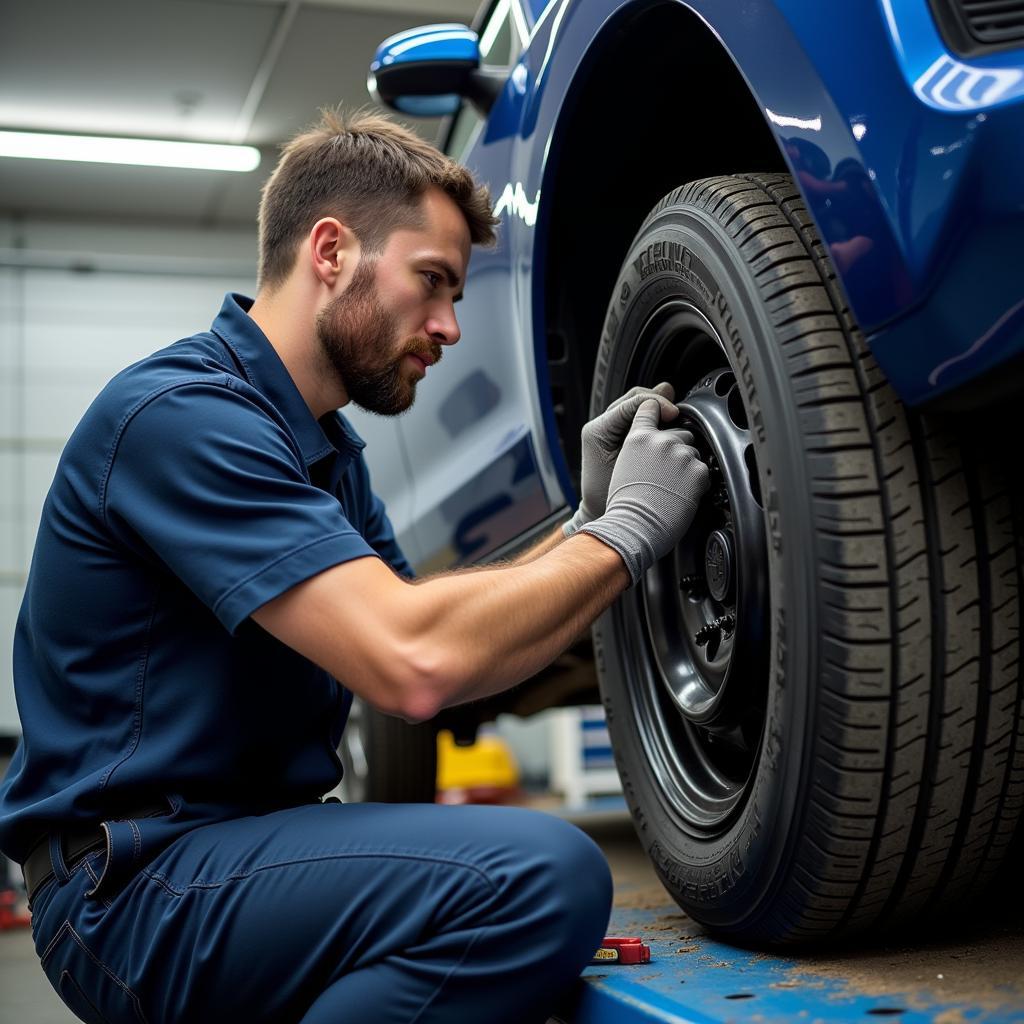Getting a flat tyre is never fun, and figuring out the repair cost can be confusing. Don’t worry, we’re here to break down the cost of fixing a punctured tyre so you can get back on the road without breaking the bank.
Factors Affecting Tyre Repair Cost
Several factors influence how much you’ll pay to repair a punctured tyre. Here’s a breakdown:
- Type of puncture: A simple puncture caused by a nail is usually the cheapest to fix. Larger punctures, sidewall damage, or blowouts might require a complete tyre replacement, which is pricier.
- Tyre size and type: Larger tyres, run-flat tyres, and those with specialized features generally cost more to repair or replace.
- Repair method: A simple plug is the cheapest fix, but a patch is a more robust and reliable solution, though slightly more expensive.
- Location: Repair shops in busy city centers or those with premium services might charge higher labor costs.
Tyre Repair Options and Costs
Let’s explore the common tyre repair options and their typical costs:
1. Tyre Plug
A tyre plug is a quick and inexpensive fix for small punctures. It involves inserting a rubber plug into the hole to seal the leak.
Cost: $10-$25
Pros:
- Affordable
- Fast repair time
Cons:
- Not as reliable as a patch
- May not be suitable for all punctures
2. Tyre Patch
A tyre patch is a more durable repair option that involves applying a patch from the inside of the tyre to cover the puncture.
Cost: $20-$40
Pros:
- More reliable and long-lasting than a plug
- Suitable for larger punctures
Cons:
- More expensive than a plug
- Slightly longer repair time
3. Tyre Replacement
Sometimes, a puncture is too severe to repair, and you’ll need a new tyre.
Cost: Varies widely depending on tyre size, brand, and type (from $50 to over $500)
Pros:
- Ensures a safe and reliable ride
- Might be necessary for sidewall damage or blowouts
Cons:
- Most expensive option
 Mechanic repairing a tyre in a workshop
Mechanic repairing a tyre in a workshop
Can I Repair a Punctured Tyre Myself?
While DIY tyre repair kits are available, we strongly advise against it. Incorrectly repairing a tyre can compromise its integrity and lead to dangerous situations on the road. It’s always best to leave it to the professionals.
“Remember, your tyres are the only point of contact between your car and the road,” says John Smith, a senior mechanic at AutoService Central. “A proper repair ensures your safety and the longevity of your tyres.”
When to Repair vs. Replace a Tyre
Here’s a quick guide to help you decide:
Repair:
- Puncture is on the tread (center portion) of the tyre.
- Puncture is smaller than 1/4 inch in diameter.
- Tyre has not been driven on while flat for an extended period.
Replace:
- Puncture is on the sidewall.
- Puncture is larger than 1/4 inch in diameter.
- Tyre has visible damage, such as cuts, bulges, or cracks.
- Tyre is old and the tread is worn down.
Tips to Prevent Punctures
While not always avoidable, these tips can help minimize your risk:
- Check your tyre pressure regularly: Properly inflated tyres are less likely to get punctured.
- Inspect your tyres for wear and tear: Replace worn tyres promptly.
- Be mindful of road hazards: Avoid driving over debris, potholes, and curbs whenever possible.
Conclusion
A punctured car tyre can be an unexpected hassle, but knowing the repair costs can help you make informed decisions. Remember to prioritize safety and consult a professional for reliable repairs. By understanding your options and following preventive measures, you can keep your tyres in top shape and enjoy a smooth and safe driving experience.

Leave a Reply